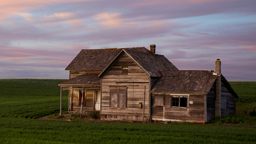After planting, I got distracted through fall and let my garden duke it out with a tangle of annual weeds. Still distracted, I left the jungle over the winter, which kept the chickadees and titmice happy as they rummaged among the standing mulch, protected by winter winds as they foraged for seed.
Spring brought less distraction, renewed energy and fresh ambition to sow new seed into my garden. It is a right of passage after all. During my spring cleaning, as I raked off the dead stalks and leaves from my fall-
planted coneflowers and asters, I noticed vigorous, green growth spreading over the warming ground. A far cry from feeble, each one survived. These perennials had been protected all winter long by the standing dead stalks of the annual weeds from the previous year.
This got me thinking about the value of a standing mulch cover. Although I’m not implying that you let your garden go wild with weeds to protect newly planted perennials that you have planted during the fall (2–3 inches of clean, weed-free straw mulch nestled around new plants for the winter would do the trick), I do recommend that you consider leaving your established perennials uncut until the following spring. Certainly the most inexpensive and efficient fall mulching method that I can think of, this standing cover will not only insulate the soil over the winter, but it will also provide shelter and food for birds when they need it most.
Jennifer Baker is a professional landscape problem-solver who focuses on natural solutions and has a passion for all things cabin. See her work at www.sparrowlandplanning.com.











